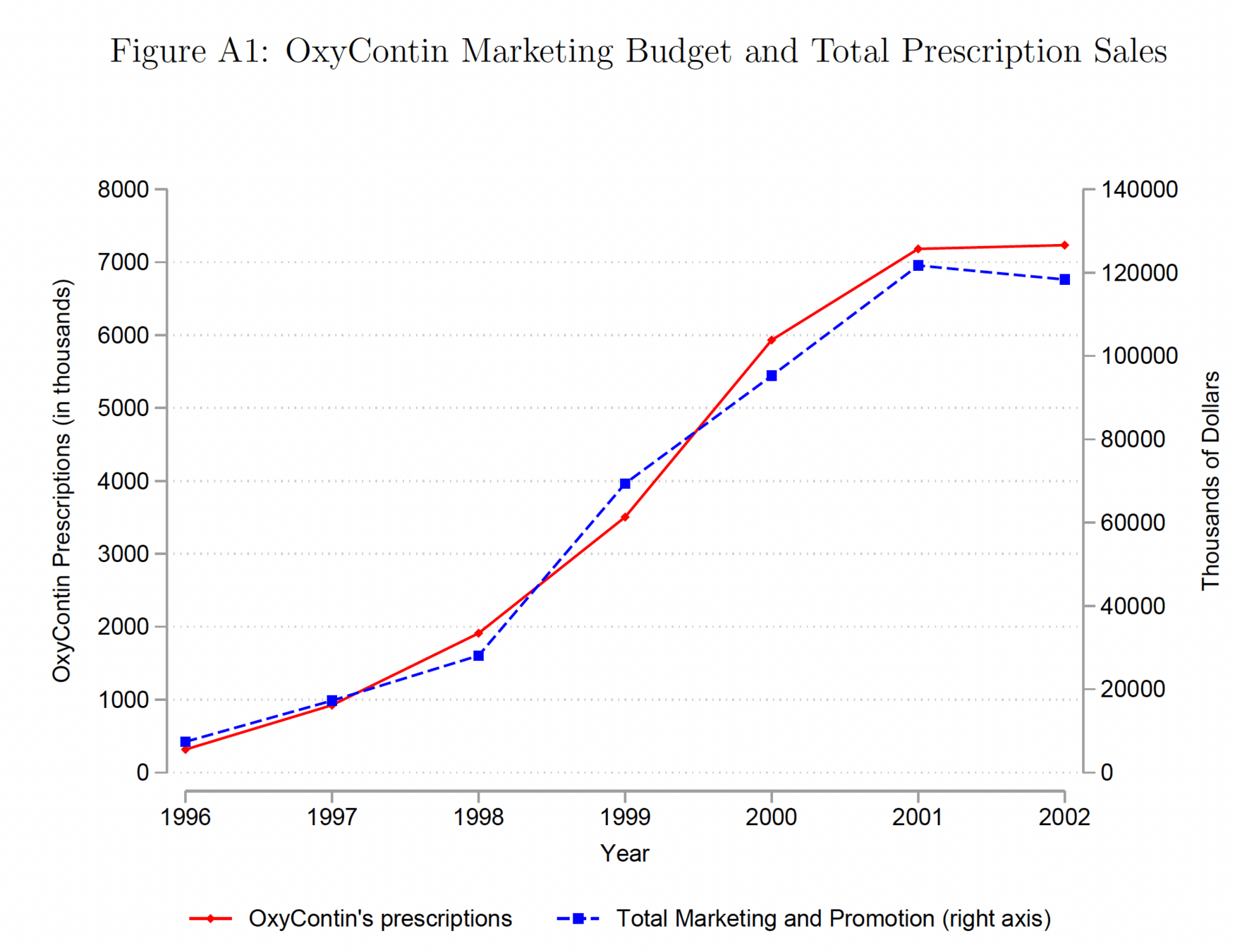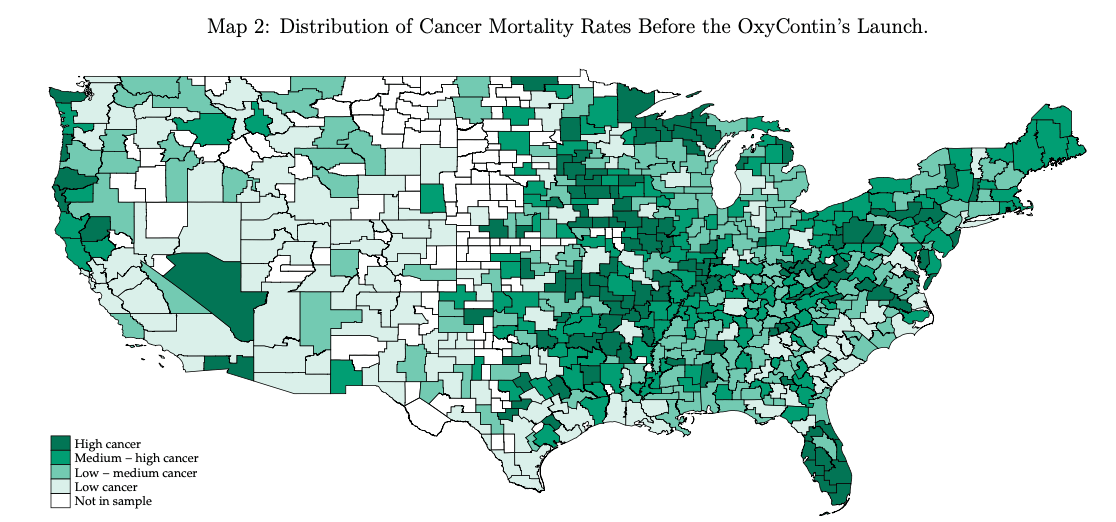Arteaga and Barone (2023)
The economics of Housing & Homelessness
Overview
Motivation
- Over the past two decades more than 700,000 fatally overdosed from opioids
- The downstream effects of well-being and intergeneration effects are unknown
- To date, there hasn't been a strong identification strategy that removes to potential selection bias between areas with large amounts of opioid prescriptions and those with smaller amounts
Results
Going from the 5th percentile to the 90th percentile in cancer mortality caused a
- 55% increase in opioid deaths
- 32 (35) % increase in SNAP (SSDI)
- 5% increase in low birth weights
Background
- Purdue Pharma introduced OxyContin in 1996
- " MS Contin’s patent protection expired in 1996"

Alpert et al. (2022) use state level variation in regulation involving the supply of opioids
"They show that five states with early versions of prescription drug monitoring programs (PDMPs), or triplicate prescriptions, received less marketing from Purdue Pharma and reported lower levels of prescription opioids and fewer overdose deaths"
Identification
Prescription Opioids
Outcomes
Purdue Pharma's Marketing Strategy
Preferred Instrument
Treatment
Cancer Mortality Rate
Instrument
Identification Strategy
Prescription Opioids
Outcomes
Purdue Pharma's Marketing Strategy
Preferred Instrument
Treatment
Cancer Mortality Rate
Instrument
Identification Strategy
Not locally randomly assigned
High Cancer Mortality Area
Low Cancer Mortality Area
(1) Oxycontin initially promoted to the Cancer Pain Market
(2) Purdue Pharma later targeted top prescribers which meant that initial targets received more marketing
IV in Residualized Form
Prescription Opioids
Pharmacies licensed for Class 2 Opioids
Purdue Pharma's Marketing Strategy
Alternative Identification Strategies
Robustness
We do not find any evidence of a relationship between mid-nineties cancer mortality and growth in our outcome variables before the launch of OxyContin
Comments/Thoughts
These are intended to be helpful to students reading the paper
Why are the results stated in reference to cancer mortality rate?
"A move from the 5th to the 95th percentile of mid-cancer mortality corresponds to a 32% increase in the share of SNAP recipients and a 35% increase in the share of the population receiving SSDI."
Comment
Put another way, why do we care about the effect of the instrument on an outcome in this context?
Why is there variation of cancer mortality?
"Those records show OxyContin was initially promoted to the cancer pain market"
Comment

"Our identification strategy requires that in the absence of OxyContin’s marketing, outcomes in areas with higher cancer mortality would have exhibited the same trends as in areas with lower cancer mortality (Goldsmith-Pinkham et al., 2020). To test this identifying assumption, we use an event-study approach and investigate the possible presence of differential pre-trends."
Pre-trends aren't going to be very informative in this context for the first stage
Comment
- During the pre-period, OxyContin didn't exist...